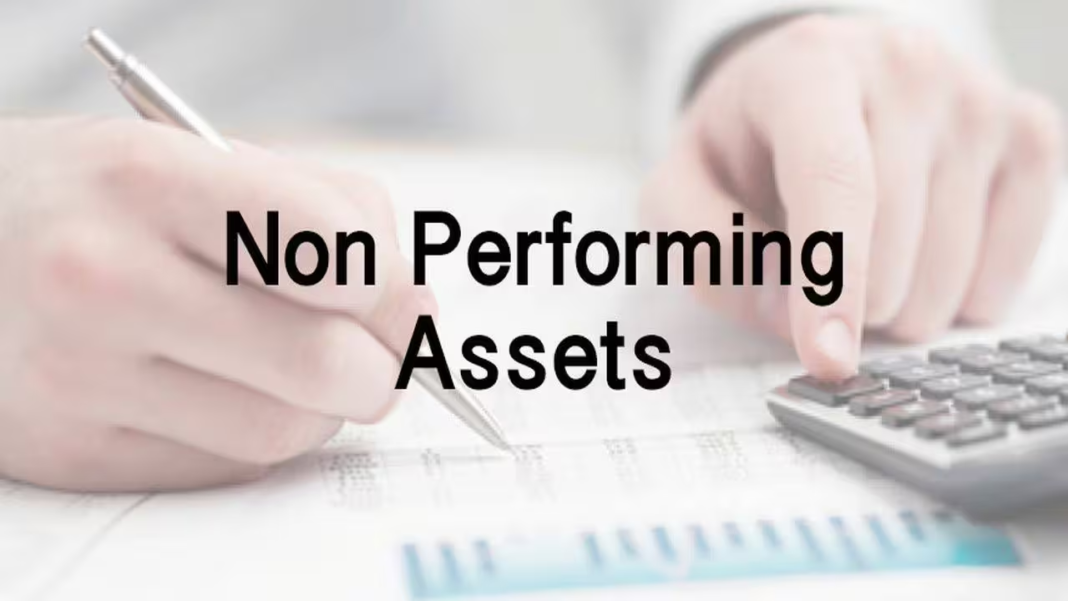A nonperforming asset (NPA) is a classification used by financial institutions to describe a financial asset that is not currently generating income. The term is usually used in relation to loans and other types of debt instruments. An NPA can become a performing asset again if the borrower starts making payments on the debt or if the asset is sold and generates income.

However, if an NPA remains unpaid or unsold for a prolonged period of time, it may be written off as a loss by the lender. NPAs are sometimes also referred to as “troubled assets” or “non-accruing loans.”
What is a Nonperforming Asset?
A nonperforming asset (NPA) is defined as a loan or advance for which the principal and/or interest payments are overdue for a period of 90 days or more. An NPA is also classified as a substandard asset if the borrower has stopped making payments or the payments are irregular.
In order to be classified as an NPA, the asset must be impaired, meaning that it is unlikely that the full amount of principal and interest will be recovered. The impairment may be due to changes in the market value of collateral, deterioration in the borrower’s financial condition, or other factors.
Once an asset is classified as an NPA, it remains on the balance sheet of the lender and is recorded as a loss. The lender will then take steps to recover as much of the loan as possible, through foreclosure, sale of collateral, or other means.
Types of Nonperforming Assets
There are two types of nonperforming assets: secured and unsecured.
A nonperforming asset (NPA) is a loan or advance for which the principal or interest payments are 90 days or more overdue.
There are two types of NPAs:
- Nonaccrual loans: These loans are not generating any interest income for the lender because the borrower has stopped making payments. The outstanding principal and interest on these loans is still owed to the lender, and will have to be eventually repaid.
- Accrual- basis NPAs: These loans are still accruing interest, but the borrower has stopped making payments on the principal. The outstanding balance on these loans keeps growing, as the interest continues to accrue. Eventually, the borrower will have to repay both the outstanding principal and accrued interest.
Secured nonperforming assets are those that are backed by collateral, such as a mortgage or car loan. If the borrower defaults on the loan, the lender can seize the collateral to recoup its losses. Unsecured nonperforming assets, on the other hand, are not backed by any collateral. If the borrower defaults on an unsecured loan, the lender has no recourse other than to try to collect the debt through legal channels.
Both types of nonperforming assets can be damaging to a lender’s balance sheet. Secured loans are more likely to result in a loss for the lender if they go into default, but unsecured loans can also cause financial hardship for lenders if they are unable to collect on them.
The different types of Nonperforming Assets
A nonperforming asset is an asset that is not generating income for the company. Nonperforming assets can include real estate, vehicles, machinery, and equipment. Nonperforming assets can also include loans and accounts receivable.
- Real estate: Real estate that is not generating income for the company is a nonperforming asset. This can include vacant land, commercial buildings, and residential property.
- Vehicles: Vehicles that are not being used or are not generating income for the company are nonperforming assets. This can include cars, trucks, boats, and aircraft.
- Machinery and equipment: Machinery and equipment that is not being used or is not generating income for the company are nonperforming assets. This can include office furniture, computers, and manufacturing equipment.
- Loans: Loans that are not being paid back or are in default are nonperforming assets. This can include mortgages, personal loans, and business loans.
- Accounts receivable: Accounts receivable that are not being paid back or are in default are nonperforming assets. This can include customer invoices, medical bills, and credit card balances.
The risks of a Nonperforming Asset
A nonperforming asset (NPA) is a loan or advance for which the borrower has stopped making payments. The risks of an NPA are twofold: the possibility that the borrower will default on the loan, and the possibility that the value of the collateral will decline.
Default risk is the risk that a borrower will not be able to repay a loan. This risk is highest when economic conditions are weak and borrowers are unable to find new sources of income. Collateral risk is the risk that the value of the collateral will decline. This can happen if the property used as collateral declines in value, or if there are problems with titles or other legal issues.
NPAs can be a serious problem for lenders, because they can lead to large losses. When an NPA is created, it is important for lenders to take prompt action to minimize their losses.
How to manage a Nonperforming Asset
If you have a nonperforming asset, there are a few things you can do to manage it.
First, you need to assess the situation. Why is the asset not performing? Is it due to market conditions, or is there something else going on?
Once you have a handle on the situation, you can develop a plan to address it. If the problem is market-related, you may need to wait it out and hope for the best. But if there are other issues, you’ll need to take action.
You may need to sell the asset, or perhaps restructure it in some way. You might even need to write it off entirely. Whatever you do, make sure you consult with your financial advisor to ensure that you’re making the best decision for your situation.
Also Read: Best Investment Plans in India

